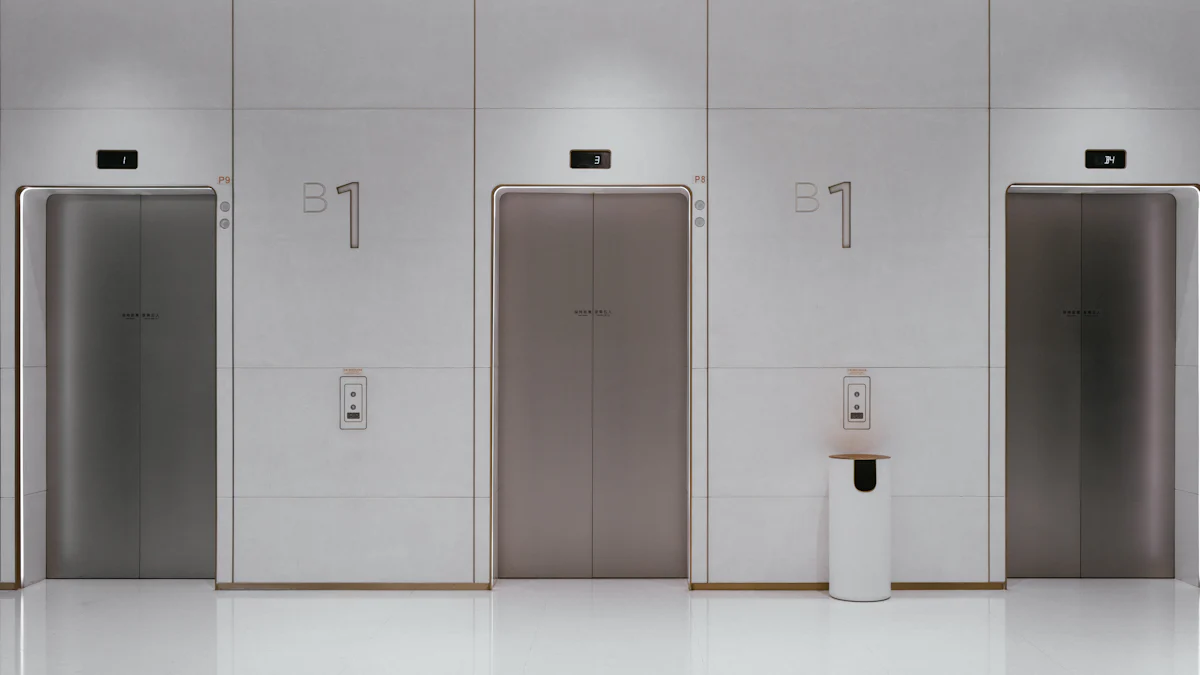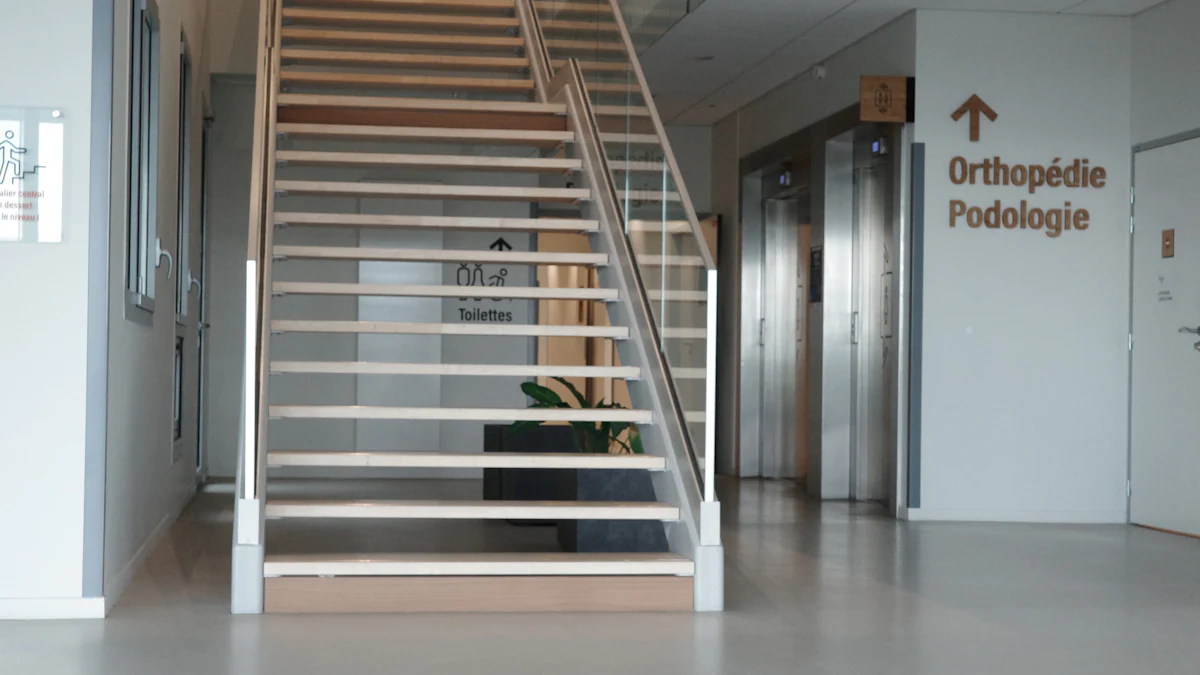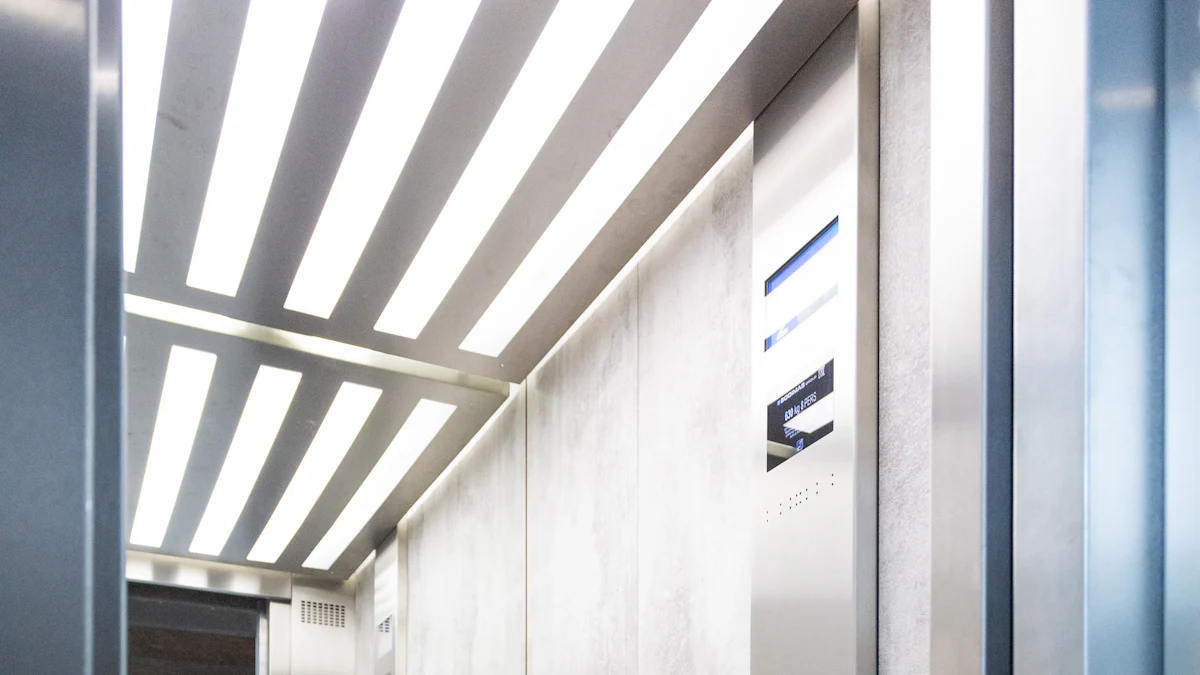Bed-type Elevators Compared to Other Hospital Elevators

Choosing the right elevator for a hospital impacts patient care and operational efficiency. A bed-type elevator, such as the bed-type elevator FJB05 or bed elevator FJB02, offers unique advantages. Understanding these differences ensures you select the best option, whether it’s a bed-type elevator FJB01 or another model, tailored to your hospital’s needs.
Key Takeaways
- Bed-type elevators are bigger and made for hospitals. They fit hospital beds and tools, helping move patients easily.
- Safety features like non-slip floors and stop buttons are important. These elevators make patient transport safe and comfortable.
- When picking an elevator, think about hospital size, number of patients, and cost. The right elevator helps work better and care for patients.
What Is a Bed-type Elevator?

Definition and Key Features
A bed-type elevator is a specialized elevator designed for hospitals and healthcare facilities. It accommodates hospital beds, stretchers, and medical equipment. Unlike standard elevators, it prioritizes functionality and patient care. These elevators feature spacious cabins, smooth operation, and advanced safety mechanisms. They also comply with strict healthcare standards to ensure reliability and hygiene.
Key features include a larger cabin size, higher load capacity, and precise leveling systems. These attributes allow seamless movement of patients and staff. Additionally, bed-type elevators often integrate noise reduction technology and anti-bacterial materials. This ensures a quiet and sanitary environment.
Design for Hospital Beds and Stretchers
The design of a bed-type elevator focuses on the unique needs of hospitals. Its dimensions allow easy entry and exit for hospital beds and stretchers. The wide doors and flat thresholds eliminate obstacles during patient transport. The cabin layout ensures enough space for medical staff to accompany patients.
The elevator’s design also supports the movement of bulky medical equipment. This makes it an essential tool for operating rooms, ICUs, and emergency departments. Its robust construction ensures durability under frequent use.
Safety and Comfort Enhancements
Safety and comfort are critical in a bed-type elevator. These elevators include features like anti-skid flooring, emergency stop buttons, and backup power systems. Smooth acceleration and deceleration reduce discomfort for patients during transport. Advanced control systems ensure precise stops, preventing sudden jerks.
Comfort enhancements also include proper ventilation and soft lighting. These features create a calming environment for patients and staff. By prioritizing safety and comfort, bed-type elevators improve the overall hospital experience.
Key Differences Between Bed-type Elevators and Other Hospital Elevators
Size and Dimensions
A bed-type elevator is significantly larger than standard hospital elevators. Its cabin dimensions are designed to accommodate hospital beds, stretchers, and accompanying medical staff. You will notice that the doors are wider, and the interior space allows for smooth maneuvering of bulky equipment. In contrast, other hospital elevators often have smaller cabins, which may not support the seamless transport of patients lying on stretchers. The spacious design of a bed-type elevator ensures that patient care remains uninterrupted during transit.
Load Capacity and Weight Limits
Bed-type elevators are built to handle heavier loads. They can support the combined weight of a patient, medical staff, and equipment without compromising performance. Most models offer a higher weight limit compared to standard hospital elevators. This feature is essential for transporting critical care patients or heavy medical devices. If your hospital frequently moves such loads, a bed-type elevator becomes a necessity.
Speed and Efficiency
Speed plays a crucial role in emergency situations. Bed-type elevators often operate at optimized speeds to ensure quick yet smooth transport. While standard elevators may prioritize energy efficiency over speed, bed-type elevators strike a balance. Their advanced control systems minimize delays, ensuring patients reach their destinations promptly.
Durability and Frequency of Use
Hospitals demand elevators that can withstand continuous use. Bed-type elevators are engineered for durability, with robust materials and components that endure frequent operation. Standard hospital elevators, while durable, may not match the heavy-duty construction of bed-type models. If your facility experiences high traffic, a bed-type elevator offers a reliable solution.
Accessibility and Safety Features
Accessibility is a cornerstone of bed-type elevator design. Features like low thresholds, anti-skid flooring, and wide entryways make them ideal for patient transport. Safety enhancements, including emergency stop buttons and backup power systems, ensure uninterrupted operation. While other hospital elevators may include basic safety features, bed-type elevators go further to meet the unique demands of healthcare environments.
Applications of Bed-type Elevators in Hospitals

Patient Transport and Critical Care
A bed-type elevator plays a vital role in patient transport, especially for those in critical care. Its spacious design allows you to move patients on hospital beds or stretchers without difficulty. Medical staff can accompany patients, ensuring continuous monitoring during transit. This feature becomes essential when transferring patients to operating rooms, intensive care units, or diagnostic areas. The smooth operation of the elevator minimizes discomfort, which is crucial for patients in fragile conditions.
Emergency Situations and Rapid Response
In emergencies, every second counts. A bed-type elevator ensures rapid and efficient transport of patients and medical teams. Its optimized speed and precise leveling reduce delays, allowing you to respond quickly to critical situations. Backup power systems ensure uninterrupted operation during power outages, maintaining reliability when it matters most. This capability makes it an indispensable tool in emergency departments and trauma centers.
Transporting Medical Equipment and Staff
Hospitals often require the movement of bulky medical equipment, such as ventilators, imaging devices, or surgical tools. A bed-type elevator accommodates these needs with its high load capacity and spacious cabin. You can also use it to transport medical staff between floors, ensuring they reach their destinations promptly. This versatility supports the seamless functioning of hospital operations.
Integration with Hospital Workflow
A bed-type elevator integrates seamlessly into the hospital’s workflow. Its design aligns with the movement patterns of patients, staff, and equipment, reducing bottlenecks in busy facilities. You can rely on its durability and efficiency to handle high traffic without compromising performance. By streamlining transport processes, it enhances overall hospital efficiency and improves patient care.
Choosing the Right Elevator for Hospital Needs
Factors to Consider (e.g., hospital size, patient volume, budget)
When selecting an elevator for your hospital, you must evaluate several critical factors. Start by assessing the size of your facility. Larger hospitals with multiple floors and high patient traffic require elevators with greater capacity and durability. Smaller clinics may prioritize compact designs that fit their limited space.
Patient volume is another key consideration. If your hospital handles a high number of patients daily, you need an elevator that can operate efficiently under frequent use. Additionally, consider your budget. While advanced models may offer superior features, they often come with higher costs. Balancing functionality with affordability ensures you make a cost-effective choice.
Tip: Consult with elevator manufacturers to customize solutions that align with your hospital’s specific needs.
Comparing Hydraulic vs. Electric Bed-type Elevators
Hydraulic and electric elevators each have unique advantages. Hydraulic models use fluid-based systems to lift the cabin, making them ideal for low-rise buildings. They offer smooth operation and are often more affordable to install. However, they may require more maintenance over time.
Electric elevators, on the other hand, rely on counterweights and motors. These models excel in energy efficiency and speed, making them suitable for taller hospital buildings. They also tend to have a longer lifespan.
| Feature | Hydraulic Elevators | Electric Elevators |
|---|---|---|
| Best for | Low-rise buildings | High-rise buildings |
| Energy Efficiency | Moderate | High |
| Maintenance Needs | Higher | Lower |
| Installation Cost | Lower | Higher |
Understanding the differences between bed-type elevators and standard hospital elevators helps you make informed decisions. Bed-type elevators enhance patient care with their spacious design, safety features, and efficiency.
Tip: Evaluate your hospital’s size, patient volume, and budget. Choose an elevator that aligns with your operational needs to maximize efficiency and care quality.
FAQ
What makes bed-type elevators different from standard hospital elevators?
Bed-type elevators feature larger cabins, higher weight limits, and advanced safety features. They are specifically designed to transport patients, staff, and medical equipment efficiently.
Are bed-type elevators suitable for all hospital sizes?
Yes, but their suitability depends on your hospital’s size and needs. Larger hospitals benefit more due to high patient volume and frequent equipment transport requirements.
How do I maintain a bed-type elevator?
Regular inspections, lubrication, and software updates ensure optimal performance. Partnering with a professional maintenance provider helps you address wear and tear effectively.
Tip: Schedule maintenance quarterly to prevent unexpected downtime.